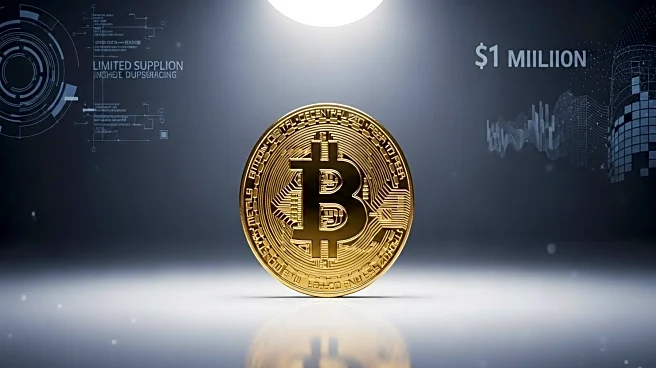What's Happening?
Bitcoin has experienced a significant price surge, surpassing $109,000, driven by factors such as Federal Reserve easing expectations, institutional adoption, and post-halving supply scarcity. The recent halving event reduced the block reward for miners, tightening the supply of new coins and contributing to the price increase. Institutional investors, including pension funds, have increased their Bitcoin holdings, reinforcing the bullish momentum. Additionally, the U.S. SEC's approval of Bitcoin futures-based ETFs has attracted substantial inflows, further legitimizing Bitcoin as a mainstream financial asset.
Why It's Important?
Bitcoin's price surge reflects its growing acceptance as a legitimate asset class, attracting institutional investors and influencing market dynamics. The introduction of regulatory frameworks, such as Bitcoin ETFs, marks a significant milestone in integrating digital assets into traditional financial systems. This development could lead to increased investor confidence and broader adoption of cryptocurrencies. However, the volatility associated with Bitcoin remains a concern, posing risks for investors and necessitating careful market analysis.
What's Next?
As Bitcoin continues to gain traction, investors will closely monitor regulatory developments and macroeconomic trends that could impact its price. The potential for profit-taking and short-term corrections remains, especially if economic data shifts or the Federal Reserve alters its stance. Upcoming upgrades to the Bitcoin network may enhance scalability and reduce transaction costs, further solidifying its position as a digital store of value. The evolving landscape of Bitcoin mining operations and energy demand could also influence market dynamics.











